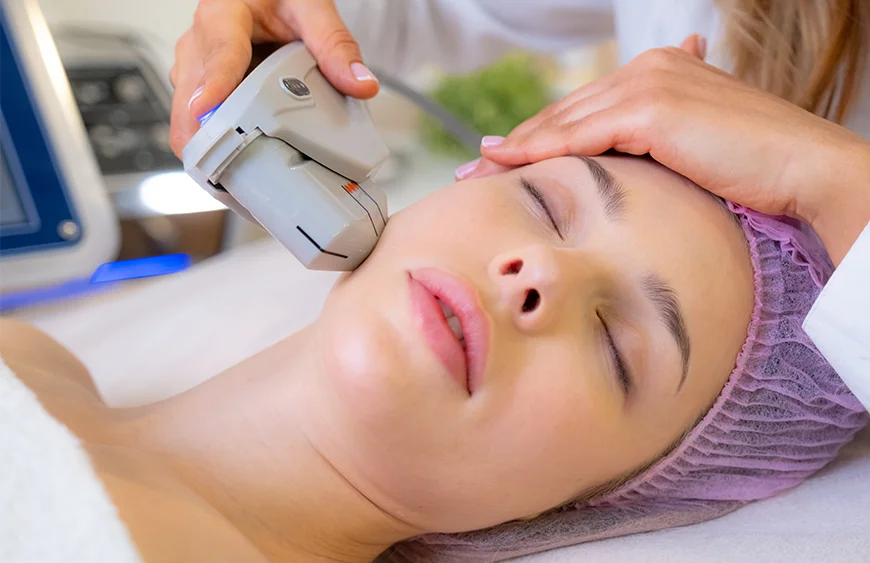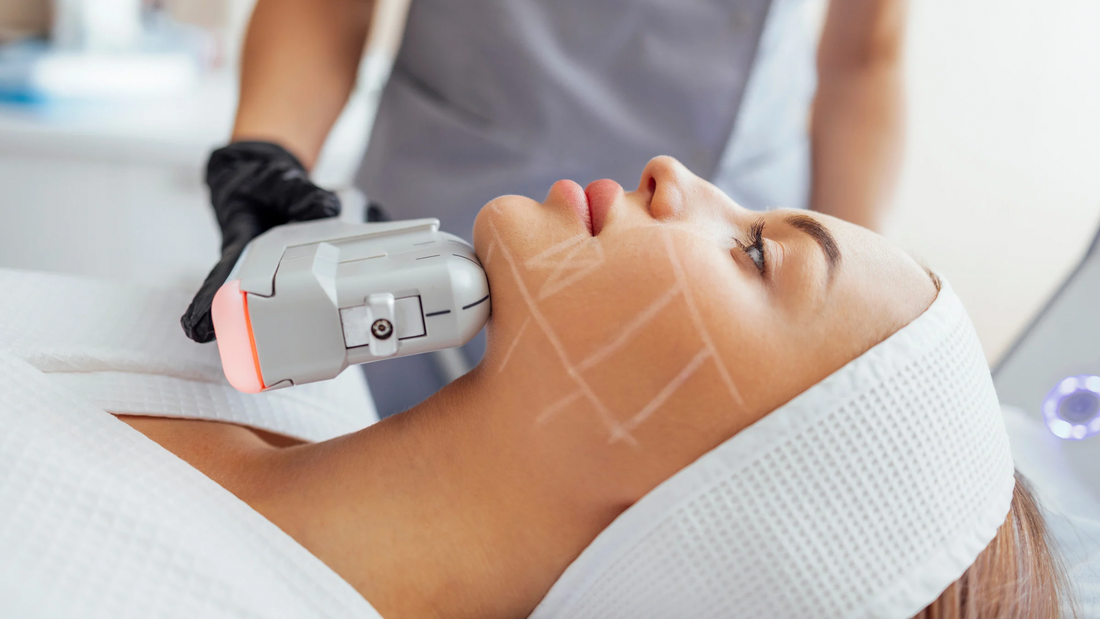HIFU Treatment: The Safe, Non-Invasive Course to Glowing Skin
High-Intensity Focused Ultrasound (HIFU) therapy has actually arised as an engaging choice for those seeking non-invasive skin rejuvenation. This innovative technology takes advantage of ultrasound waves to promote collagen production, efficiently attending to worries such as skin laxity and indications of aging. With its minimal downtime and tailored technique, HIFU caters to a range of individuals looking to boost their skin's look. The complexities of exactly how HIFU works and its viability for different skin types merit a closer evaluation, as recognizing these variables is critical for notified decision-making.
What Is HIFU Treatment?
High-Intensity Focused Ultrasound (HIFU) therapy has arised as a cutting-edge non-invasive treatment developed to renew the skin and promote an extra youthful appearance. This cutting-edge treatment takes advantage of the power of ultrasound technology to promote collagen manufacturing and improve skin flexibility without the need for surgical treatment. HIFU has gotten appeal among people looking for effective skin tightening and lifting remedies.
HIFU therapy is particularly appealing because of its safety and security account and marginal downtime. Unlike standard renovations, which often require prolonged recovery periods and involve considerable dangers, HIFU offers a comfortable option that can be done in a clinical setting. Clients normally experience just light pain throughout the treatment, and most can resume their daily activities instantly afterward.
The flexibility of HIFU prolongs beyond aesthetic improvement; it is also made use of in numerous clinical applications. Nonetheless, its key emphasis continues to be in the world of aesthetic dermatology, where it resolves problems such as sagging skin, great lines, and creases. As study remains to progress, HIFU treatment is solidifying its place as a valuable option for people looking for to attain radiant, younger skin without intrusive techniques.

Just How HIFU Functions
HIFU therapy runs by using focused ultrasound energy to pass through the skin at different depths, precisely targeting the facial layers where collagen fibers live. This advanced technique uses high-intensity focused ultrasound waves that generate warmth within the targeted cells, stimulating an all-natural recovery reaction. As the ultrasound power is provided, it causes regulated thermal injury to the skin's deeper layers, prompting the body to launch a regenerative process.
The thermal result of HIFU activates collagen synthesis, which is necessary for preserving skin elasticity and suppleness. In time, this causes the remodeling of collagen fibers, boosting the general framework and appearance of the skin. The therapy can be personalized use this link to address certain areas of problem, such as sagging skin or penalty lines, making it an efficient option for different skin types.
Unlike standard surgical techniques, HIFU supplies a non-invasive option, significantly lessening recovery time and prospective complications. Individuals can generally go back to their daily tasks immediately after the treatment. The accuracy of HIFU innovation makes certain that surrounding cells remain unhurt, supplying a safe and targeted technique to skin restoration.
Benefits of HIFU
The advantages of HIFU therapy expand beyond its ingenious modern technology, providing a series of benefits for those seeking skin rejuvenation. Among one of the most noteworthy advantages is its non-invasive nature, which removes the need for operations and considerable recovery times. Clients can appreciate significant skin tightening up and training effects without the connected dangers of standard renovations.

Additionally, HIFU promotes collagen production, a crucial healthy protein that adds to skin flexibility and suppleness. As collagen degrees climb, people often experience improved skin texture and a reduction in fine lines and wrinkles. This natural improvement brings about a vibrant look that can last for months, otherwise years.
In addition, HIFU therapy is extremely customizable, allowing specialists to tailor the procedure to the specific needs and you can check here concerns of each person. This tailored strategy maximizes results, guaranteeing that every patient receives optimum treatment.
What to Expect During Therapy
Throughout a HIFU therapy session, individuals can generally find more information expect a duration of 30 to 90 minutes, depending upon the area being targeted. HIFU. The treatment begins with a comprehensive appointment, where the specialist examines the skin and talks about the patient's objectives. After this, the skin is cleansed, and a topical anesthetic might be used to make sure comfort during the therapy
Once the skin is prepared, a special ultrasound gel is related to facilitate the delivery of ultrasound power. The HIFU device is then placed, and the professional thoroughly targets the fixed areas. Individuals might experience a sensation of warmth or light pain as the ultrasound energy permeates the skin, boosting collagen production.
Throughout the treatment, specialists constantly keep an eye on the individual's convenience levels, changing setups as needed. Outcomes can slowly enhance over a number of months as collagen continues to develop, leaving clients with revitalized, radiant skin.
Ideal Candidates for HIFU

Candidates should likewise have realistic expectations relating to outcomes; while HIFU can provide noticeable training and tightening up, it is not a replacement for operations. Individuals with particular medical conditions, such as extreme skin infections or open injuries in the treatment location, may not be ideal for HIFU. Those with specific skin types or problems, such as severe acne or rosacea, need to seek advice from a qualified expert to figure out if HIFU is suitable.
In addition, individuals that are expecting or have a history of serious allergic responses to ultrasound therapy must prevent this treatment. Ultimately, a comprehensive assessment with a qualified expert is necessary to review personal health background and skin condition, making certain that HIFU is a safe and efficient alternative for achieving their visual objectives.
Conclusion
In conclusion, HIFU treatment represents an appealing non-invasive alternative for people looking for skin restoration. With marginal downtime and a customized strategy, HIFU supplies significant advantages for those with mild to moderate skin laxity.